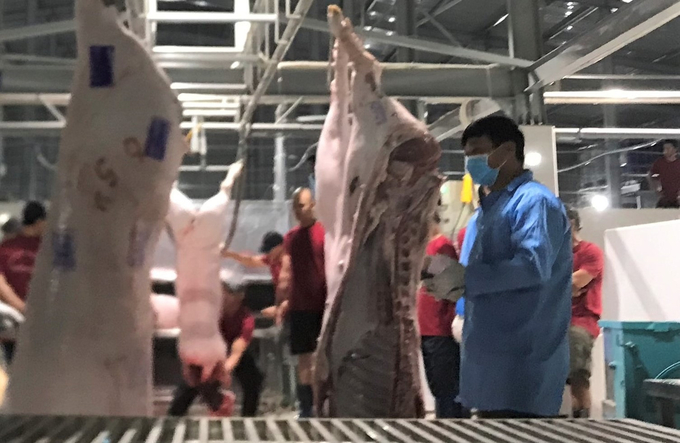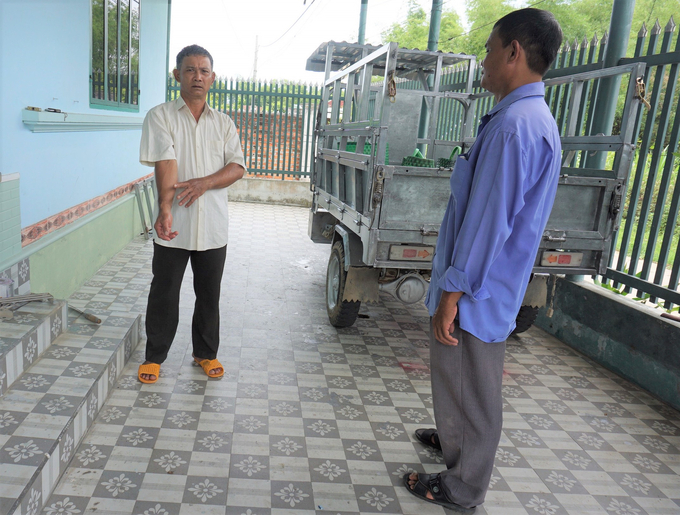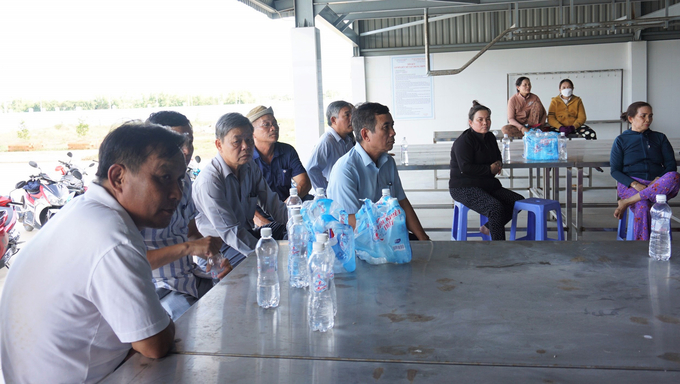May 20, 2025 | 06:52 GMT +7
May 20, 2025 | 06:52 GMT +7
Hotline: 0913.378.918
May 20, 2025 | 06:52 GMT +7
Hotline: 0913.378.918
Quy Nhon Food Production and Processing Co., Ltd has recently put into operation the slaughter line in Nhon An commune (An Nhon town, Binh Dinh). The company’s factory serves livestock and poultry slaughtering for hundreds of small slaughter households in An Nhon town and 5 northern communes of Tuy Phuoc district.
Since its first days of operation, the Nhon An centralized slaughter factory has received registration from 100 households, working on over 300 pigs per day. The factory utilizes 3 pig slaughter lines and 2 poultry slaughter lines so that the small slaughter households can supply the products to markets early. As for their evaluation, the slaughter process is fast and guaranteed, and products are strictly controlled in terms of quality before release for consumption, so they meet food hygiene and safety requirements.

The first day the Nhon An centralized animal slaughter factory (An Nhon town, Binh Dinh) came into operation. Photo: V.D.T.
“In the past, my family slaughtered 2 - 3 pigs at home every day. We mainly sold them to customers at the afternoon market. However, when the State issued a policy of moving small slaughterhouses into one centralized slaughterhouse, we changed the slaughter schedule to 4-5 am to serve the needs of customers while making sure we follow the State's policy,” said Nguyen Van Hung, head of a slaughter household in Phuoc Hung commune (Tuy Phuoc district).
According to Huynh Ngoc Diep, Director of Binh Dinh Sub-department of Livestock Production and Animal Health, to thoroughly prepare for the relocation of small slaughterhouses to the centralized slaughterhouse, from June 13, the working group of the local agricultural sector continuously organizes inspections of each slaughterhouse, giving instructions and requiring households to comply with bringing livestock into the centralized slaughterhouse. As a result, meat products sold at markets in An Nhon all have slaughter control marks.

Small slaughter households purchase vehicles to transport livestock to the centralized slaughterhouse. Photo: V.D.T.
Bui Tan Loc, Vice Chairman of the People's Committee of Binh Dinh ward (An Nhon town), said that this locality has 14 households bringing pigs to slaughter at the factory. Among the total of 74 pigs, some households registered 10 - 20 pigs at a time. Regarding small unregistered slaughter households, the ward authorities continuously check to avoid cases of clandestine slaughtering at home.
“An Nhon town used to have 115 small households slaughtering livestock and poultry interspersed in residential areas. When the Nhon An centralized animal slaughter factory was put into operation, 95 households decided to collaborate. There are still some problems at first, but we will continue to discuss with the households and find solutions. Their compliance with regulation right from the early stages is a positive signal. I believe everything will gradually be put in order," said Phan Thanh Hoa, Head of the Economic Department of An Nhon town.

Small slaughter households in 5 northern communes of Tuy Phuoc district (Binh Dinh) had a meeting at the Nhon An centralized animal slaughter factory before putting it into operation. Photo: V.D.T.
Muoi My, head of a slaughter household in Binh Dinh ward, also mentioned the problems he had during the factory’s early stage of operation. “I registered to slaughter 2 pigs/day, the factory arranged a cage just enough for 2 pigs to stand. However, when the farmer asked to sell the pigs, he sold the entire pen of 10 pigs, forcing me to buy them all instead of just 1 - 2 pigs. I don't know where to keep the other 8 to gradually slaughter them. Meanwhile, the slaughterhouse at home has been completely destroyed, so there is no more room to lock the other pigs up. I hope the factory will look into this matter and quickly come up with a solution”.
To meet the requirements of localities, Binh Dinh Sub-department of Livestock Production and Animal Health will mobilize 10 veterinary officers to the factory to carry out slaughter control and veterinary hygiene inspection, ensuring that cattle are thoroughly checked before, during and after slaughter.
“The province's interdisciplinary working group chaired by the Department of Agriculture and Rural Development will coordinate with relevant units to regularly monitor the slaughter situation from residential areas to markets so that meat products sold are guaranteed in terms of food safety and hygiene. Slaughter households that are lazy and do not comply with bringing cattle to the centralized slaughter factory will be penalized according to regulations", said Huynh Ngoc Diep, Director of Binh Dinh Sub-department of Livestock Production and Animal Health.
Translated by Samuel Pham

(VAN) Vietnam aims to become a 'leader' in the region in the capacity and managing effectively soil health and crop nutrition.
![Reducing emissions from rice fields: [Part 1] Farming clean rice together](https://t.ex-cdn.com/nongnghiepmoitruong.vn/608w/files/news/2025/05/05/z6509661417740_a647202949c539012a959e841c03e1d3-nongnghiep-143611.jpg)
(VAN) Growing clean rice helps reduce environmental pollution while increasing income, allowing farmers to feel secure in production and remain committed to their fields for the long term.
/2025/05/19/5136-1-144800_230.jpg)
(VAN) The Nghe An Provincial People's Committee has just approved the list of beneficiaries eligible for revenue from the Emission Reductions Payment Agreement (ERPA) in the North Central region for the year 2025.

(VAN) 14 out of 35 domesticated elephants in Dak Lak province have had their living conditions improved, with 11 of them currently participating in the non-riding elephant tourism model.

(VAN) Muong Nhe Nature Reserve hopes that being upgraded to a national park will lay the foundation for forest protection efforts to be carried out in a systematic, modern, and sustainable manner.
/2025/05/16/3923-2-171845_52.jpg)
(VAN) Lower costs, higher yields, and improved soil quality are outstanding benefits that soybeans bring when integrated into the crop rotation system.

(VAN) The 'For a Green National Environment' programme aims to promote a green lifestyle, support businesses in implementing ESG practices, and turn Net Zero commitments into concrete actions.